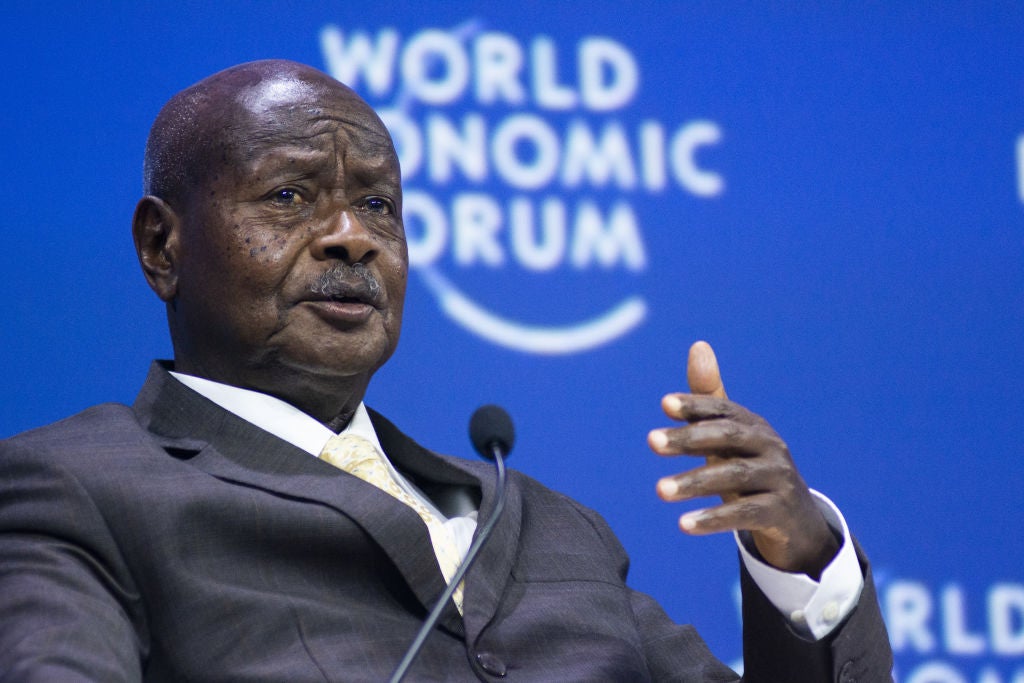
How do you plan to improve Uganda’s exports? What kind of products would you like the country to export in greater quantities?
It depends on what the external world needs and the prices because we are developing three systems of agriculture in Uganda. One is the smallholders – because of our culture, families will have about three acres per family. We have guided these people to look at seven products including coffee, fruits, dairy and milk. Also, food for themselves – one acre should be for food for themselves. In the backyard, they can have poultry, eggs, a piggery and they can also do fish farming. So, six of the seven activities are all cash, market-orientated products but which are grown by smallholders.
According to our calculations, a smallholder can get good money if he does any of them, even in a small area. We are encouraging our people to use ‘intensive agriculture’, so it is a system that is designed to deal with our way of human settlement but linked to the markets’ profitably.
The markets are internal, regional and international – wherever, we are not stuck to this one or that one, wherever the market is, whether it’s in Uganda or within the region or internationally. There is the mode of agriculture that we call intensive agriculture, meaning using a small area to get high value, but there is extensive agriculture as well, where you use more land and, although you get less per acre per annum, because you are doing it on a bigger scale you get good money. We need those products, too. These include sugarcane, tea and cotton for textiles. At one time, we were also growing tobacco, but I don’t know how many people are still doing it.
Again, the determining factor is the market. For example, sugar – much of it is consumed in Uganda, some of it is consumed in the region, but some of it can be exported if the conditions are right. For the global markets – out of that whole list of 15 or so agri-based products – the ones that can make it to the international markets profitably would include coffee, dairy products, fish, flowers, fruits, tea and textile products. Among the extensive farming we also have beef.
The third type of agriculture we have in Uganda is plantation agriculture, which is similar to large-scale, extensive farming. So it is the nature of our agriculture – synchronised with external markets – which leads us to what should be done. The point is that all those crops can grow in Uganda.
The World Bank is forecasting that timber demand will shoot up fourfold by 2050 – how do you feel about the export of timber? How can you conserve the forests at the same time as having economic development?
When I visited the King of Sweden, he told me that a pine tree in Sweden takes 120 years to mature. Here it takes only seven years. So if you have a responsible government that knows what to do, they will not touch the natural forests, but you can have planted forests – eucalyptus, pines. They are not not part of our natural system; they are like cash crops, but they grow quickly here because of the soil. We are encouraging value addition to the timber here, so that we export the timber products, not just the timber – we export the furniture and ceiling boards. If the price is correct and you link the market with the planted forests, not natural forests, it can be done because here, because of the climate, trees grow very fast. It can be a win, win.
You have been president for a long time – what is your opinion about the state of pan-Africanism? What is the potential of the African Continental Free Trade Area?
There is much more interest in the integration in Africa than [in the years] after our independence. Then, people were not clear about what would work; some of them suffered from the phenomenon of ‘arrivism’. You arrive, you have got power. Many African countries were depending on commodities such as copper and coffee.
But over the past 60 years of independence many countries have failed, many of them have even collapsed. By 1980, Africans were beginning to wake up. I was a minister in government at that time and they had a meeting in Lagos, where they evolved the Lagos Plan of Action, which talked about integration. They understood that without a market you cannot move. Since that time, they have been consolidating that movement of integration. Now, they have agreed to the Continental Free Trade Area – there is more awareness now, more consciousness for knowing what to do than before.



